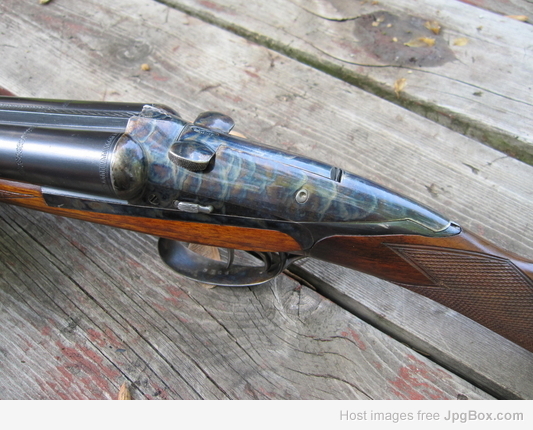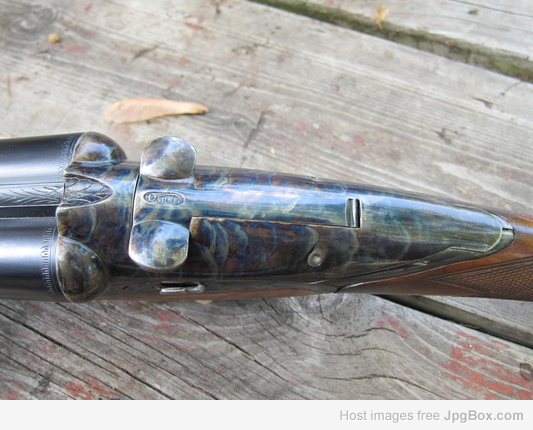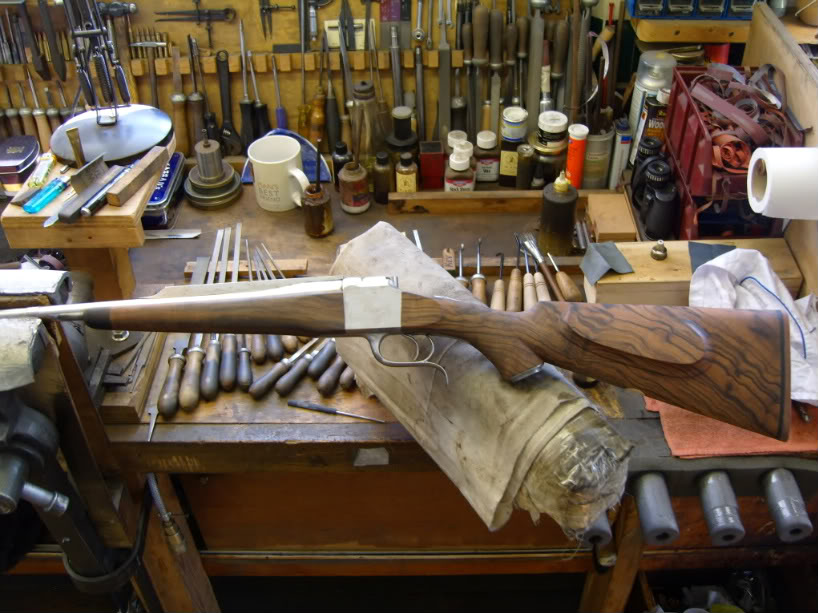Dewey,
I've removed catalyzed finish with normal methylene cloride based paint strippers. No abrasive action required, once the solvent gets under the finish it will just lift off. I've even soaked color case hardened parts in carb solvent, a similar mix of the same chemistry, and it does not hurt the case colors. I just soaked them to remove old oil that had turned to varnish, no scrubbing or anything, and I let them soak perhaps 1/2 hour, at most. Rinse in mineral spirits with some kerosene mixed in, blow off excess, and let dry, following with light oiling.
After it was restocked in France, in my lefthanded dimensions, I coated the case colored visable parts of the action on this Darne with Brownell's "Baking Lacquer". The gun was not new to begin with (1946 vintage) but, had very nice colors remaining, and I wanted to preserve what I had left. I mixed the stuff up and shot it on the action, and followed the instructions for getting it to harden in the oven. It is a good product. The gun has been used, hard, for almost 22 seasons since then, and the finish has worn off the sharp edges, but, remains and looks good elsewhere.


Coating case colors, especially those on an unengraved surface, gives them a sheen that is a bit unnatural, but, it looks better than rust growing on it.
One thing that has changed is my feelings about attempting to preserve those colors, as I'm a bit ambivalent about it now. It is nice to see those colors, but, if I wear them off, I figure I had a lot of fun in the process.
Best,
Ted


